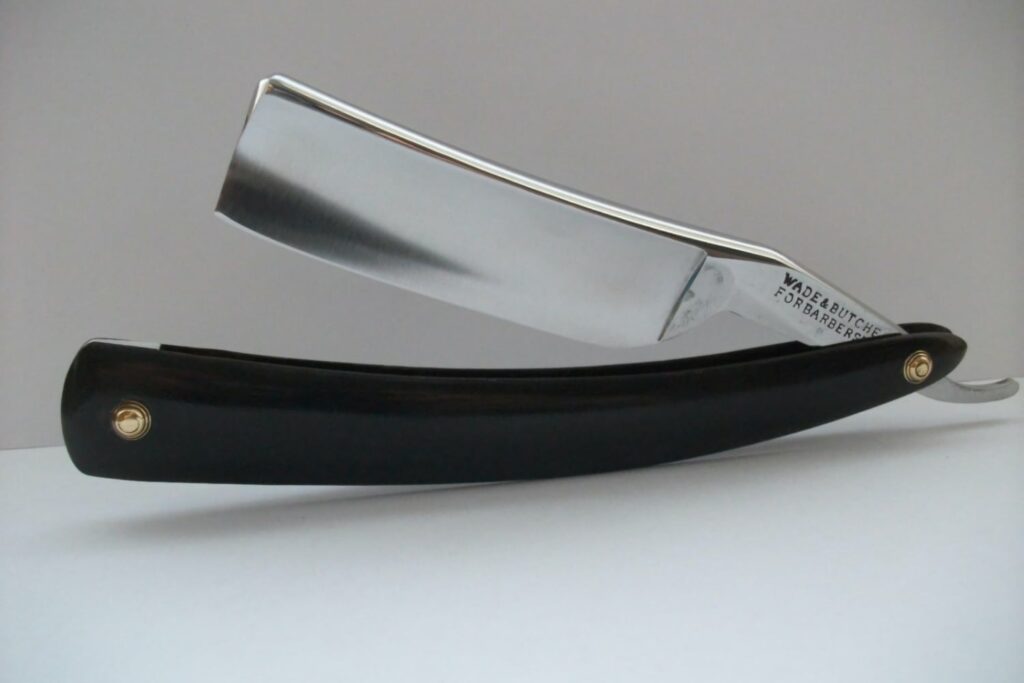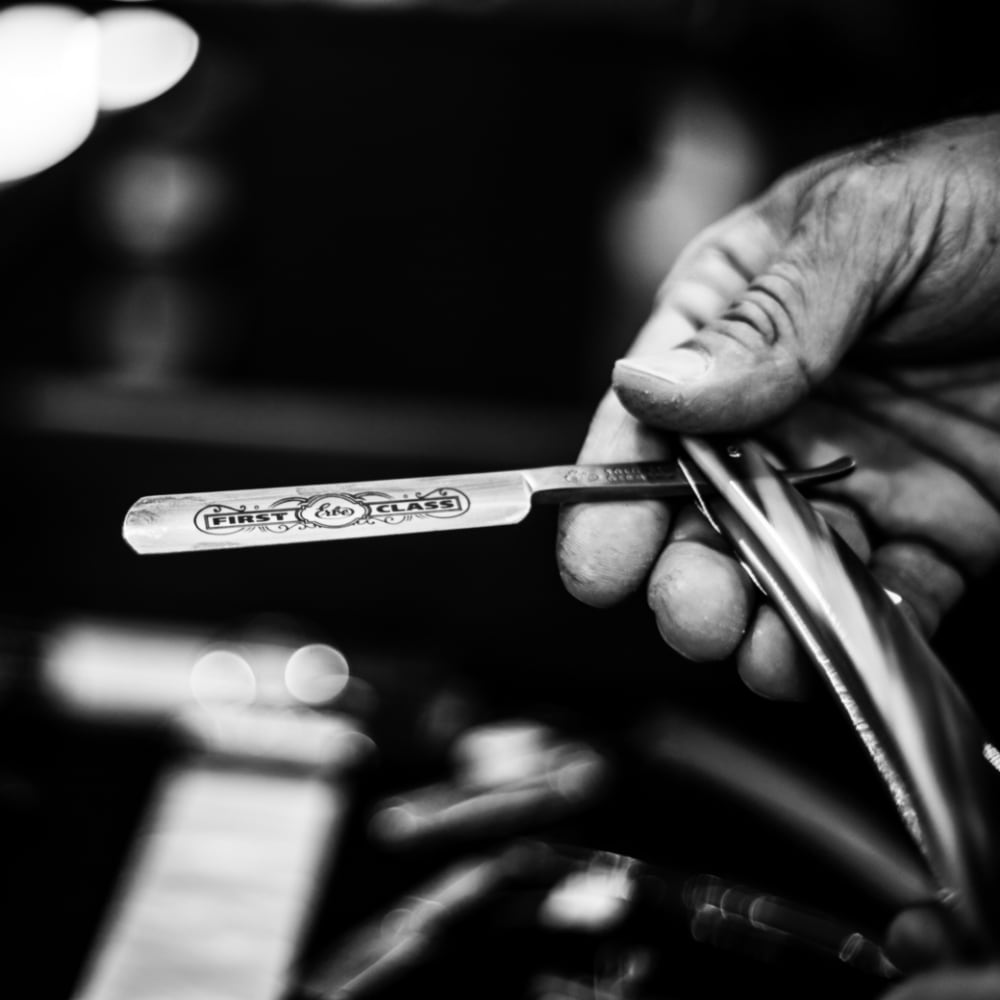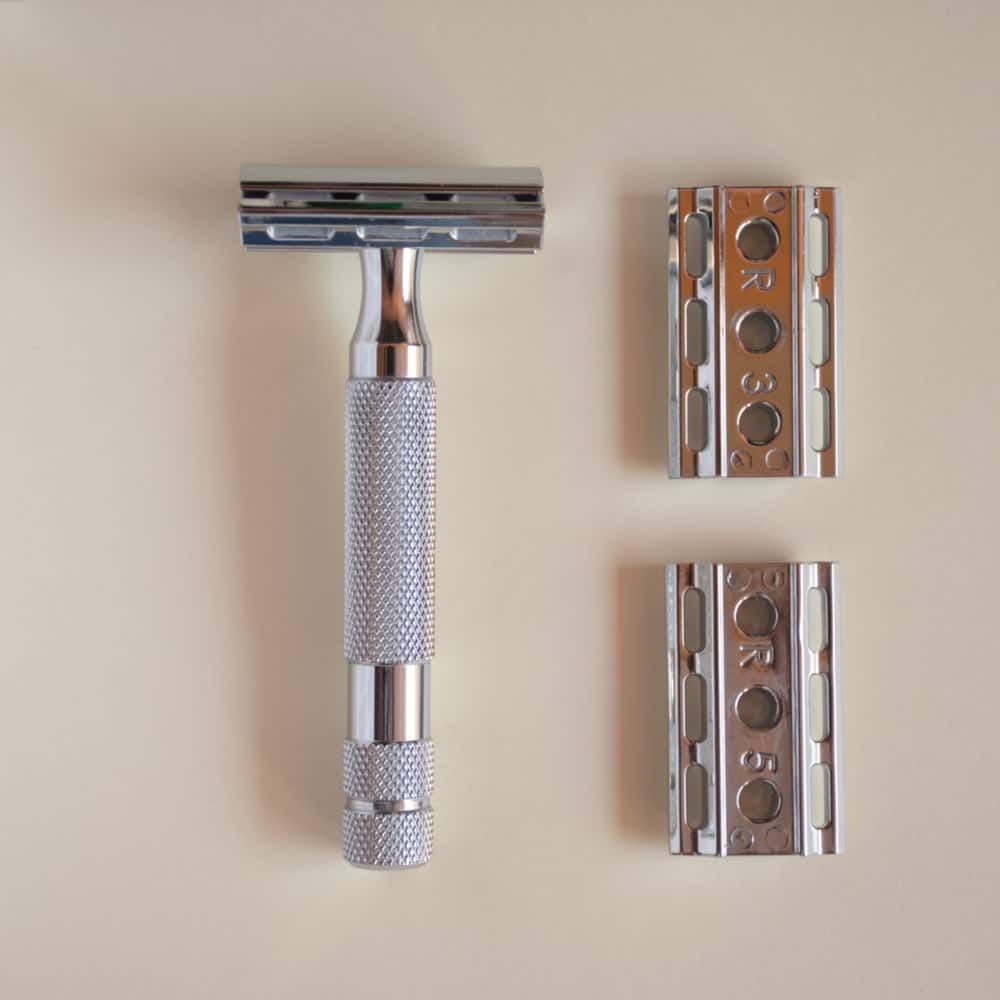Whether you are looking to retrace your great-grandfather’s steps or simply looking for a new way to shave, safety razors and straight razors offer a unique shaving experience.
While these time-tested shaving tools have taken a backseat to modern offerings, they are still, without a doubt, the best way to enjoy the art of shaving.
We’ll compare how both of these shaving tools are similar yet also drastically different from one another.
Comparison
Here is a table that outlines many of the key differences between safety and straight razors:
| Feature | Safety Razors | Straight Razors |
|---|---|---|
| Form Factor | Modern handle and head | Long, thin, pull-to-open blade |
| Holding Method | Three-finger grip | Basic grip, pinch grip, reverse grip |
| Shave Experience | Efficient | Meditative and precise |
| Maintenance | Replace blades every 5-7 shaves | Regularly hone and stropping |
| Cost | Low upfront cost | High upfront cost |
| Razor Blades | Various blades to choose from | Fixed blade |
| Safety | Reduces the risk of nicks and cuts | Can lead to nicks and cuts |
| Cleanliness | Must be cleaned regularly | Must be cleaned regularly |
| Ingrown hairs | Low risk | Low risk |
| Versatility | Only facial hair use | Only facial hair use |
| Environmental Impact | Environmentally friendly | Environmentally friendly |
A quick note about shavettes: This article will outline the differences between safety razors and traditional straight razors. Shavettes are a modification of the straight razor that has a removable blade. Shavettes use the same blade as a safety razor but have been snapped in half. These razors are largely used by barbers due to sanitary reasons.
Form factor

The most obvious difference between the safety and straight razor is the form factor.
Straight razors are rather long, thin, and have a pull-to-open blade. But this only scratches the surface. When comparing one straight razor to the next, subtle design differences regarding the blade grind, point, and handle all directly impact the shaving experience.
Double edge safety razors, introduced at the turn of the 20th century, have a modern aesthetic about them. Like a cartridge razor, they have a handle and a head that houses a single blade. The signature feature of the safety razor is the safety bar, which extends the width of the blade and helps to flatten the skin prior to the blade passing. This is a key feature that helps to reduce nicks and cuts.
Holding them

Due to the unique form factors that both these razors have, they must be held in different ways.
Straight razors have three common grips:
- Basic grip: As the name suggests, this grip is beginner-friendly. You hold the razor with your thumb, index finger, and middle finger, while the blade is facing away from you. The pinky and ring fingers rest on the tang of the razor. This grip is used for the majority of the shave.
- Pinch grip: Used for against-the-grain shaving, the pinch grip is when your index finger and thumb pinch the pivot point of the razor.
- Reverse grip: This grip is often used by barbers when shaving their clients. The razor is held with the entire hand while fully open. It allows for better visibility of the blade and allows for more control.
Getting confused about the terms? Check out our primer on straight razors, which includes a helpful diagram labeling all the parts.
Safety razors, on the other hand, are usually held with a three-finger grip. The index finger, middle finger, and thumb hold the handle. The grip should be towards the bottom of the handle, furthest away from the razor head, allowing for optimal control while shaving.
Shave experience

While both razors are excellent tools for shaving, it is important to understand that the shaving experience will vary between them.
Straight razors are regarded as the gold standard of wet shaving. When properly maintained, they offer a close and clean shave while also providing the opportunity to exercise one’s skills. However, the learning curve can be steep, and it takes time to master the craft.
The actual act of shaving will be much more measured and precise. When shaving, you must use one hand to hold the skin taut while the other hand guides the razor. The blade must be held at a 30-degree angle to the skin, and the razor must be pulled across the skin in a single pass. Folks that use a straight razor often find it quite relaxing and meditative. It is a great way to start the day.
Safety razors, while still somewhat difficult to learn for beginners, are relatively much easier to master. Once you get the hang of it, a safety razor can provide an efficient shave in a matter of minutes.
Passes with the safety razor are ideally short and overlapping. Since they lack a pivoting head, safety razors must also be held at a 30-degree angle to the skin. Think of safety razors as the halfway point between a cartridge razor and a straight razor.
Maintenance
This is where both shaving tools drastically differ from one another.
You’ll find that straight razors require a lot more maintenance than safety razors. They require regular honing and stropping to maintain their edge.
Honing should be done about once every couple of months. Some folks will do this themselves, while others may send it to a professional. Stropping must be done before every shave to help maintain the edge of the blade.
This is relatively simple and is done with a leather strop. The strop is used to remove any burrs that may have formed on the blade. It is also used to polish the blade and remove any debris that may have accumulated on the blade.
Maintenance of safety razors is much easier. Each blade of a safety razor should be replaced about every 5-7 shaves. This is a relatively simple process and can be done in a matter of seconds. The only other maintenance that is required is to thoroughly clean the razor to remove any gunk, debris, or hair that may have accumulated on the razor.
Cost
The upfront costs of traditional straight razors are much higher than safety razors. A well-made straight razor from a reputable brand can cost anywhere between $100 and $500. Meanwhile, you can get a well-made safety razor for as little as $40.
Long-term costs between the two are relatively minimal. Straight razors will require regular honing, which can add up if you don’t do it yourself. Safety razors will require you to replace the blades every few shaves, but they only average about $0.10 per blade.
Razor Blades
One notable area where safety razors have a distinct advantage is over the selection of blades.
Most safety razors have a universal blade system allowing you to use any double edge razor blade with your razor. This means you are free to experiment with different blades to find the one that works best for you.
With straight razors, you are stuck with the blade that it comes with.
When buying blades for a safety razor, we recommend sampler packs that include blades from several brands. It is a good way to efficiently find the best blade for you.
Other considerations
Here are a few other common questions and concerns folks have when comparing safety razors and straight razors:
- Safety: Safety razors were introduced as a safer alternative to the straight razor. The safety bar helps to significantly reduce the risk of nicks and cuts. While they can and will still happen, they are much less likely to occur with a safety razor than with a straight razor.
- Cleanliness: Both safety and straight razors must be cleaned regularly to maintain a bacteria-free environment. While one may think that a straight razor is less sanitary than a safety razor, this is not the case. With a single piece of metal, the straight razor is easier to clean and maintain. In fact, a compelling argument could be made that a straight razor is more sanitary than a safety razor.
- Ingrown hairs: Since both shaving tools feature a single cutting edge, the hair is never cut below the skin. Therefore, the risk of ingrown hairs is significantly reduced. Even when shaving against the grain, the risk remains low.
- Versatility: Both of these shaving tools are intended for facial hair use only. Body grooming is not generally not recommended.
- Environmental impact: Both systems are extremely environmentally friendly and don’t contain plastic. The only waste that is produced is the used blades. This is a small price to pay for a close and clean shave.